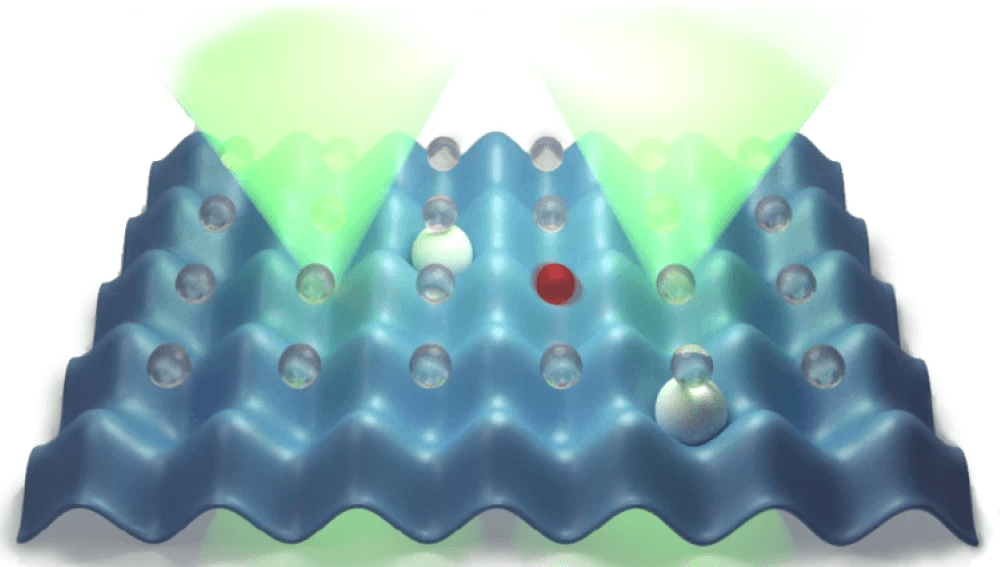A study with the participation of the Spanish National Research Council (CSIC) has proposed for the first time an analog quantum simulator to solve chemistry problems. The results of the study, published in the journal Nature, could help study molecular problems and improve the tools for their efficient description. These improvements could lead in the long term to the design of new drugs and fertilizers with improved capacities, among other applications. This work is part of the efforts of the new Quantum Technology Platform promoted by CSIC.

Molecules are the basic elements of all known matter. Its behavior is mainly determined by what is known as molecular electronic structure, which is how electrons are distributed in the molecule because of its attraction to and repulsion from the nuclei.
Despite knowing all the rules about how electrons and nuclei interact, solving this problem exactly today is extremely difficult. The main difficulty is that, due to the laws of quantum mechanics, the complexity of the computational size of the problem grows exponentially with the size of the molecules. That means we can only solve small molecules exactly.
“Finding efficient and accurate ways to solve these kinds of problems more complex molecules is one of the main challenges in chemistry today quantum, as it would open the door to improvements in molecular design. This could have impact not only fundamentally, but in the long term also on the industry, because example, helping to find new drugs or fertilizers with functionalities improved”, explains researcher Alejandro González Tudela, from the Institute of Physics CSIC’s fundamental.
Feynmann’s Paradigm
Traditionally, the way to deal with these problems has been to reduce the complexity of the problem using approaches that would allow these problems to be solved in powerful computers. However, with the latest advances in systems control a new paradigm has taken hold, proposed by physicist Richard Feynmann, which is using quantum systems to simulate these problems.
“This idea, known as quantum simulation, can be implemented from two ways: the digital one which is based on using programmable quantum computers, such as the IBMQ, with which the CSIC has recently signed an agreement, or the analogical that the interactions of a quantum system are designed to behave like concrete system that we want to simulate. The digital one is more versatile, because it would allow solve more types of problems, but is currently very limited in size and accuracy. Analog is, in principle, more robust to noise and allows systems This has already led to very spectacular results in problems of condensed matter,” adds González Tudela.
“In the field of quantum chemistry, however, all efforts have been focused until now in the search for efficient algorithms for quantum computers, mainly because no systems were known that could lead to interactions long-range issues like those needed for chemistry problems. In our work we propose for the first time an analog quantum simulator that can to deal with chemistry problems,” the researcher continues.
How the simulator works
Specifically, the work proposes to use cold atoms trapped with vacuum lasers to simulate in an analogical way the electronic structure of complex molecules. To do this, the researchers propose using fermionic atoms, as electrons, that are jumping around a three-dimensional net simulating the movement of electrons.
The attractive interaction with the nuclei is obtained by using optical potentials located with the right shape, so that the dynamics are exactly the same as the one induced by the nuclei in the molecule. The key to the proposal, however, is how to transform the local interactions that appear in these systems into a repulsive long-range interaction between the simulated electrons, such as occurs in molecules.
“To do this, we propose to use an auxiliary atom that travels faster than the others, and that under certain conditions is capable of mediating an effective interaction between the fermionic atoms. To extract the information from this simulation, it would be sufficient to measure in-situ in the experiment with well-established techniques. Since our system can be controlled and analyzed in real time, you can get information that would be very difficult to obtain by traditional methods”, concludes Alejandro González Tudela.